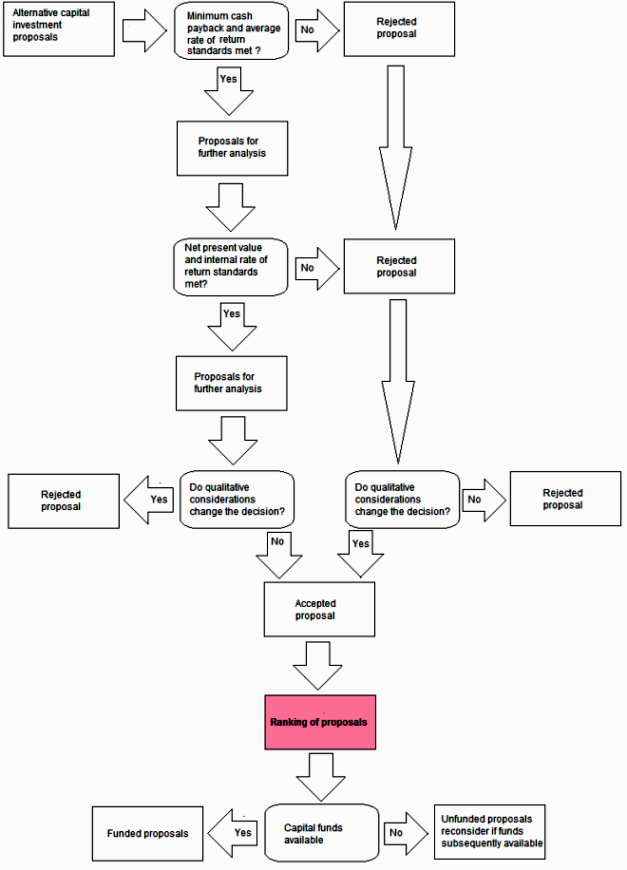Capital rationing process
Due to limited funds, companies cannot always invest in all projects that look profitable. They try to make the best possible use of funds available for investment projects.
Capital rationing is the process of selecting the most valuable projects to invest available funds. In this process, managers use a number of capital budgeting methods such as cash payback period method (CPPM), accounting rate of return (ARR) method, net present value (NPV) method and internal rate of return (IRR) method.
Steps in capital rationing:
An effective capital rationing usually consists of the following steps:
Step 1:
First of all, the alternative projects are screened using payback period and accounting rate of return methods. Management sets maximum desired payback period or minimum desired accounting rate of return for all competing alternative projects. The payback period or accounting rate of return of various alternatives is then computed and compared to the management’s desired payback period and accounting rate of return. (To know how payback period and accounting rate of return are computed, read “payback method” and “accounting rate of return method” articles)
Step 2:
The projects that pass the initial test in step 1 are further analyzed using net present value and internal rate of return methods. (To know how net present value (NPV) and internal rate of return (IRR) are computed, read “net present value method” and “internal rate of return method” articles).
Step 3:
The projects that survive in step 2 are ranked using a predetermined criteria and compared with the available funds. Finally, the projects are selected for funding.
The projects that remain unfunded may be reconsidered on the availability of funds.
Capital rationing decision process
In addition to quantitative techniques, management should also consider the qualitative factors related to all projects. For example, the purchase of a new machine can increase customer satisfaction by improving the quality of the product, reduce cost by eliminating several jobs but lower employee moral.


Leave a comment